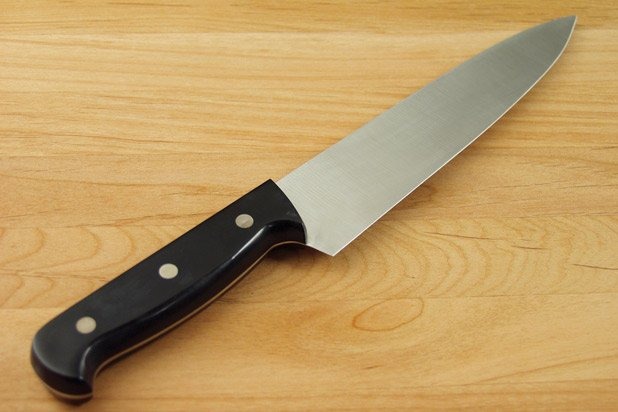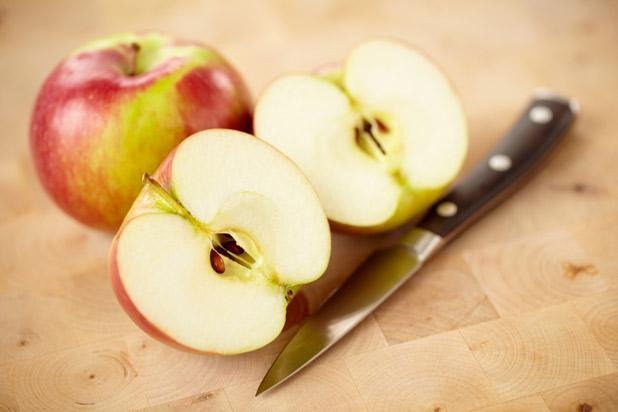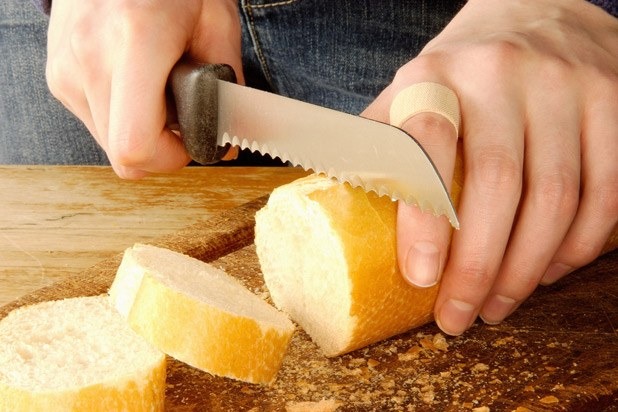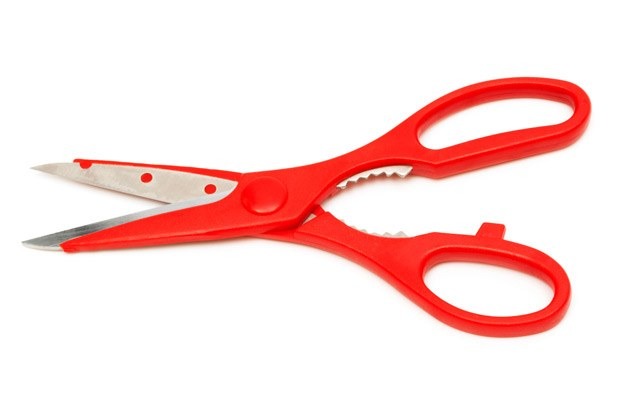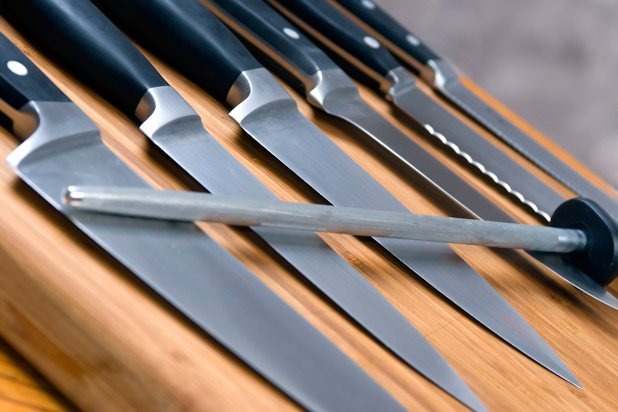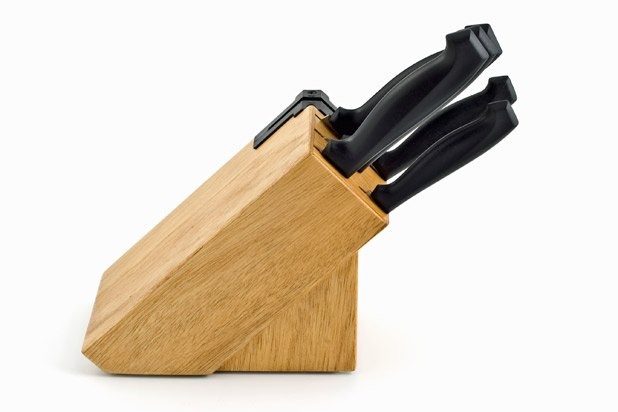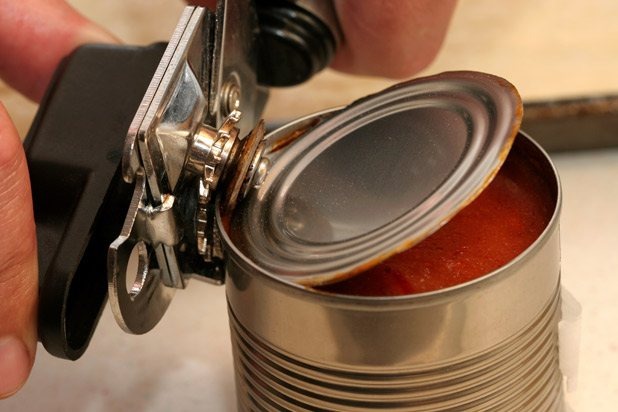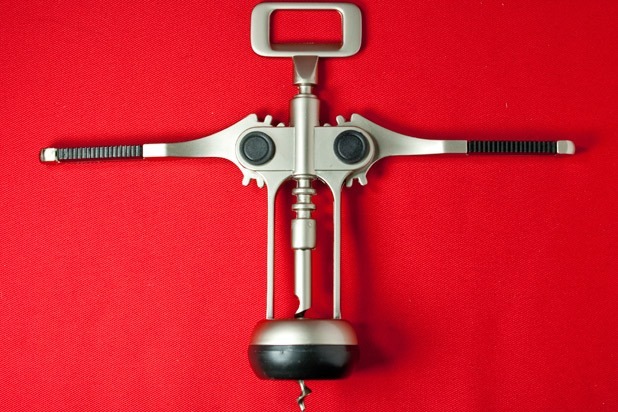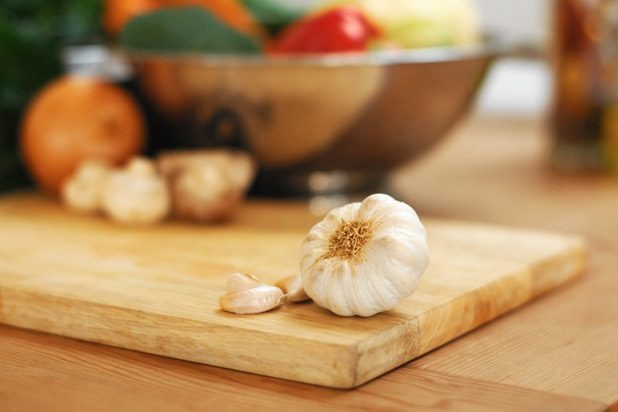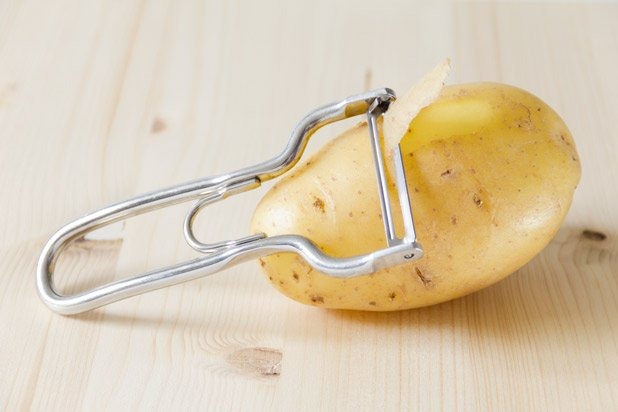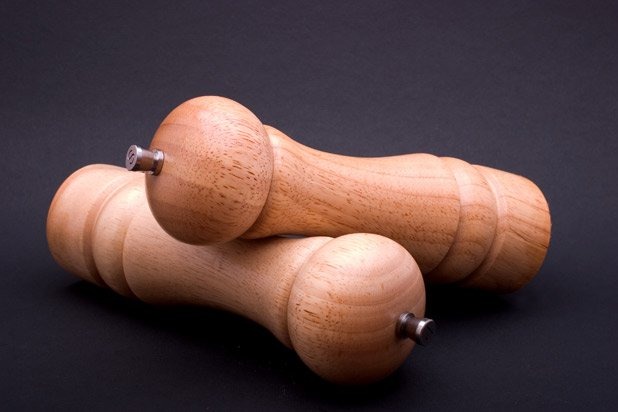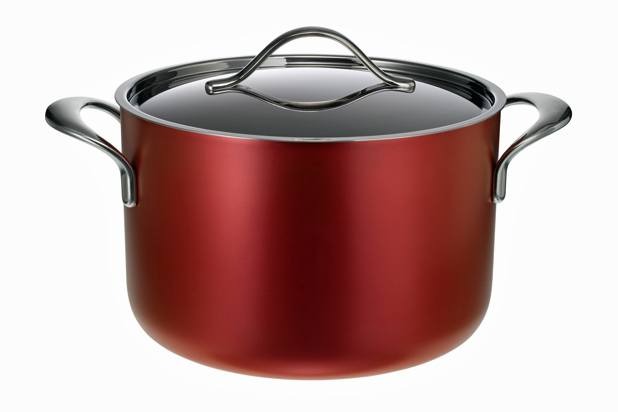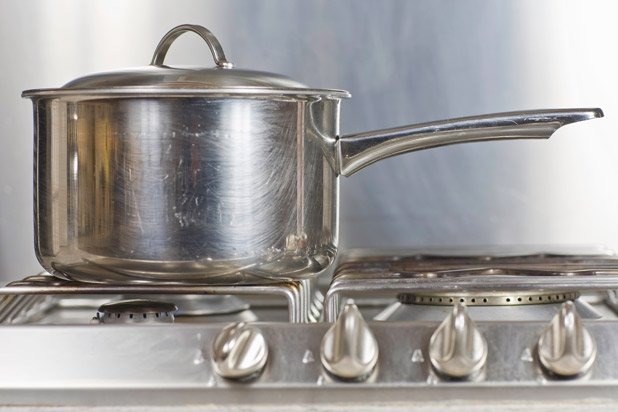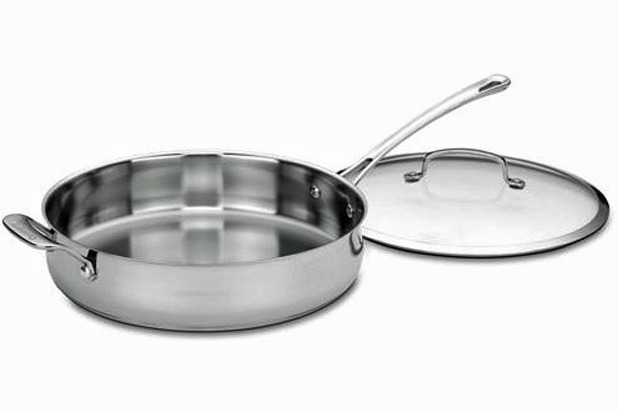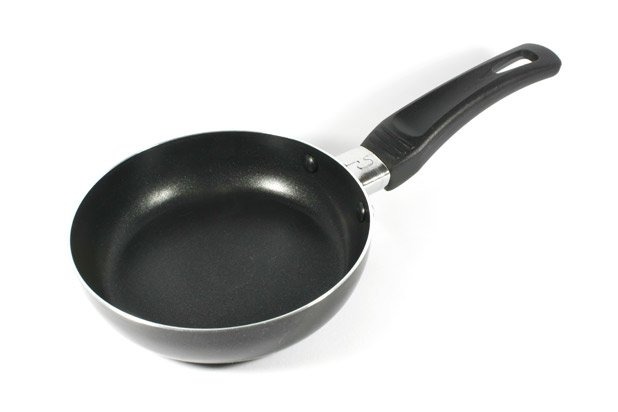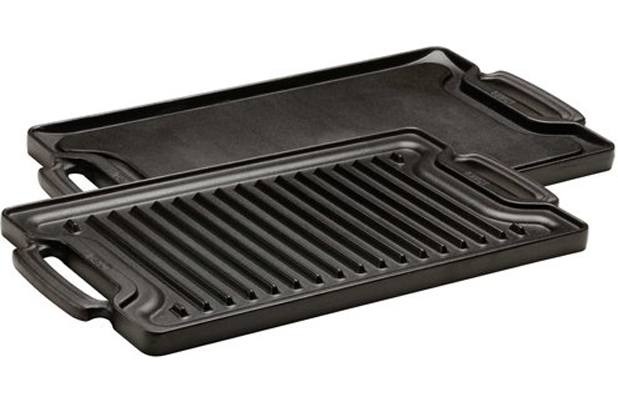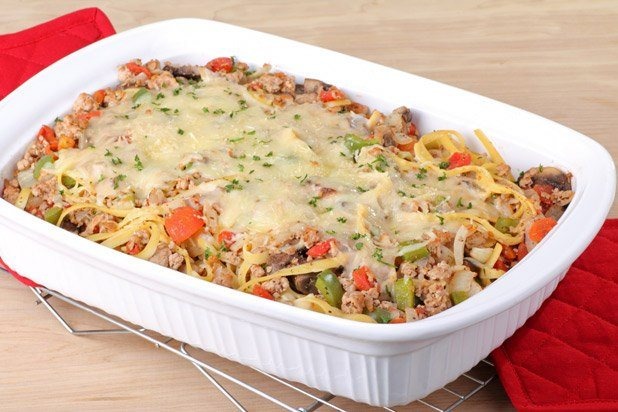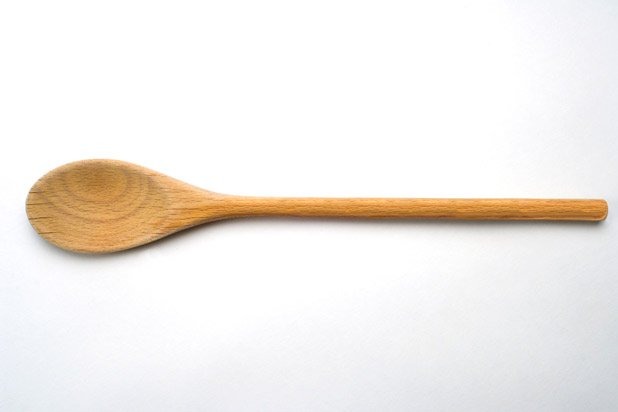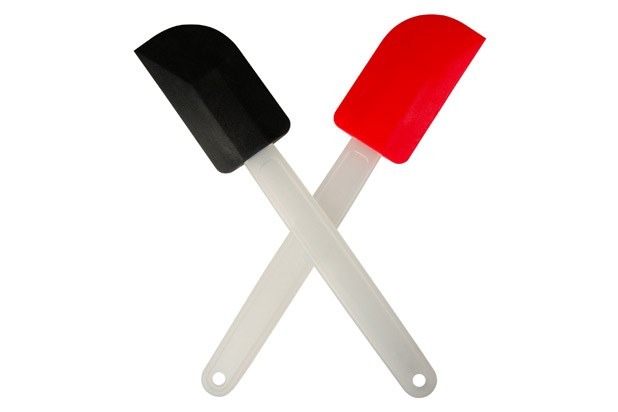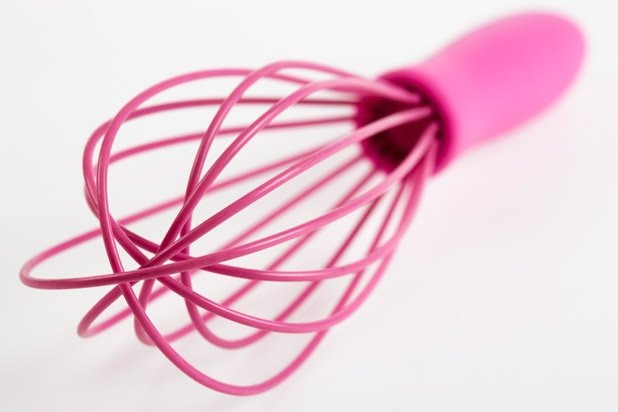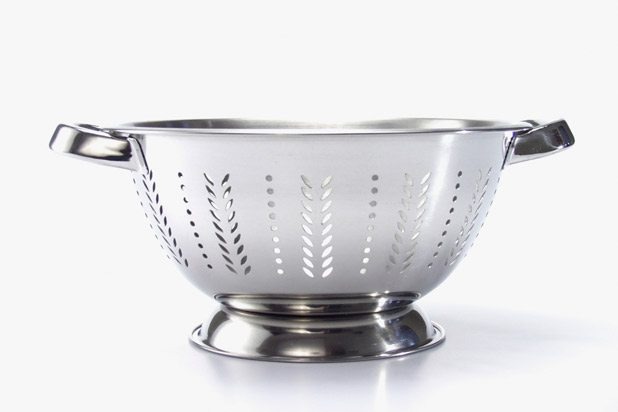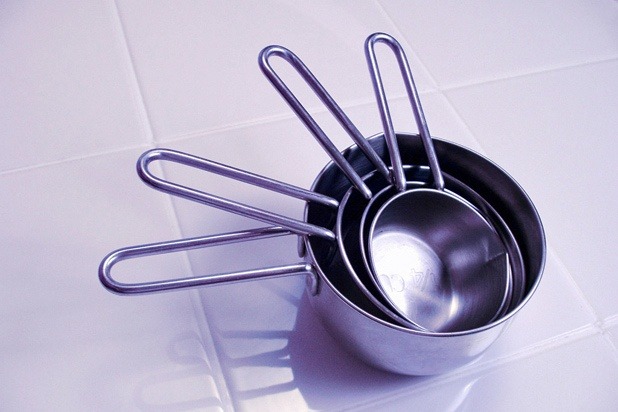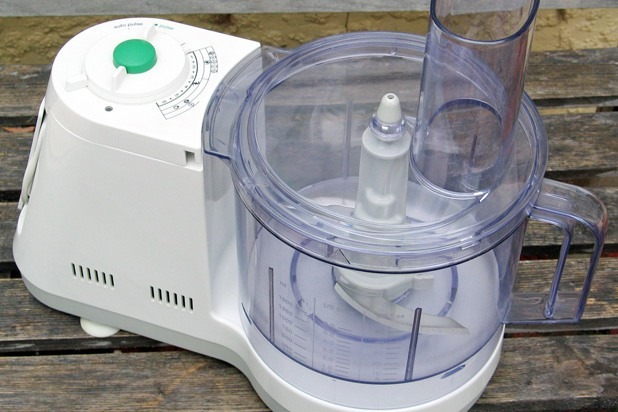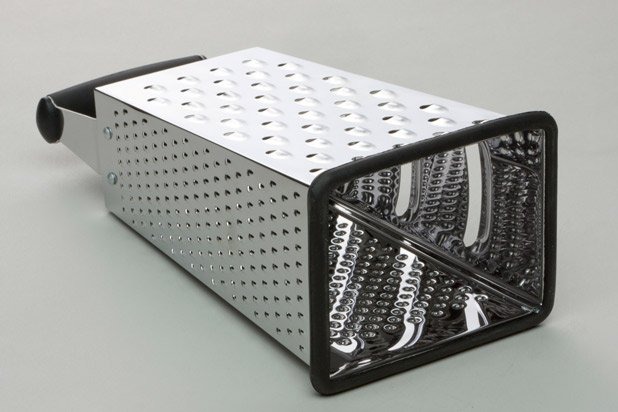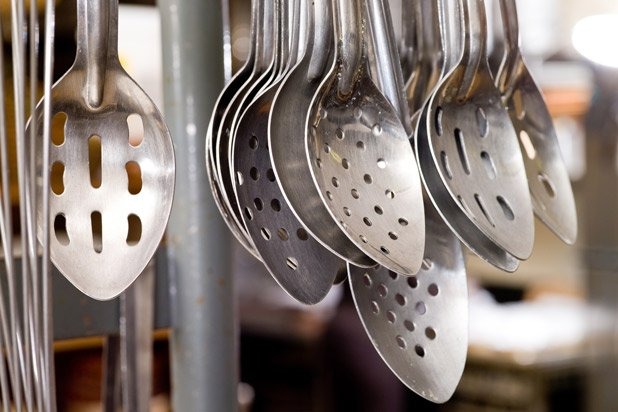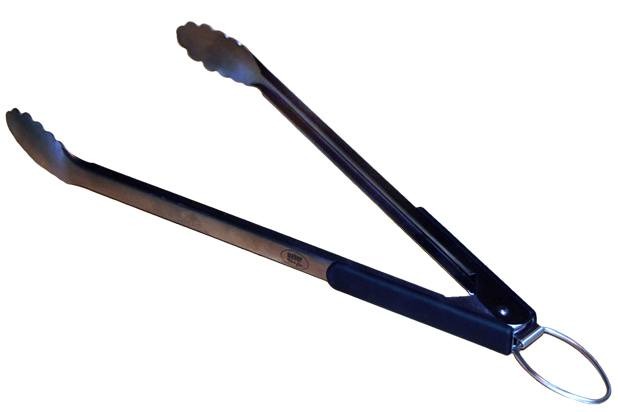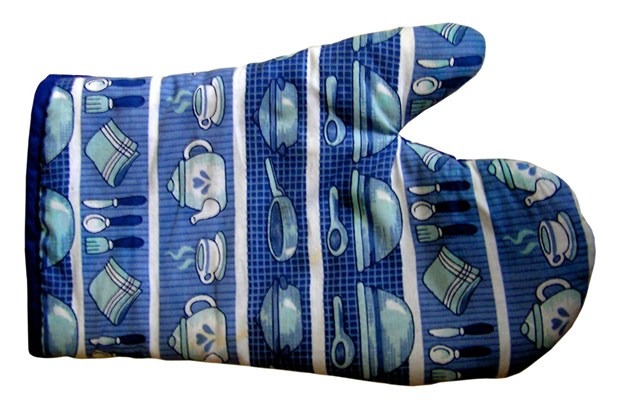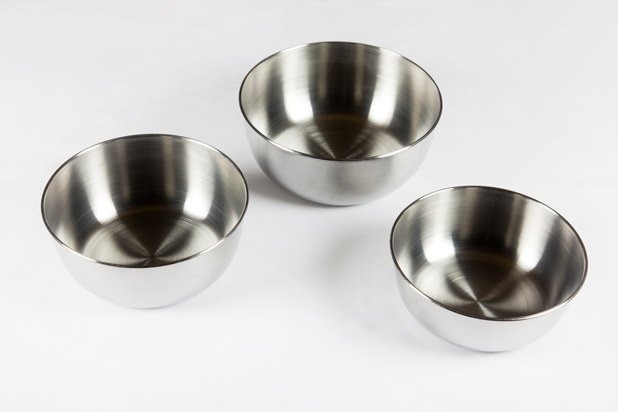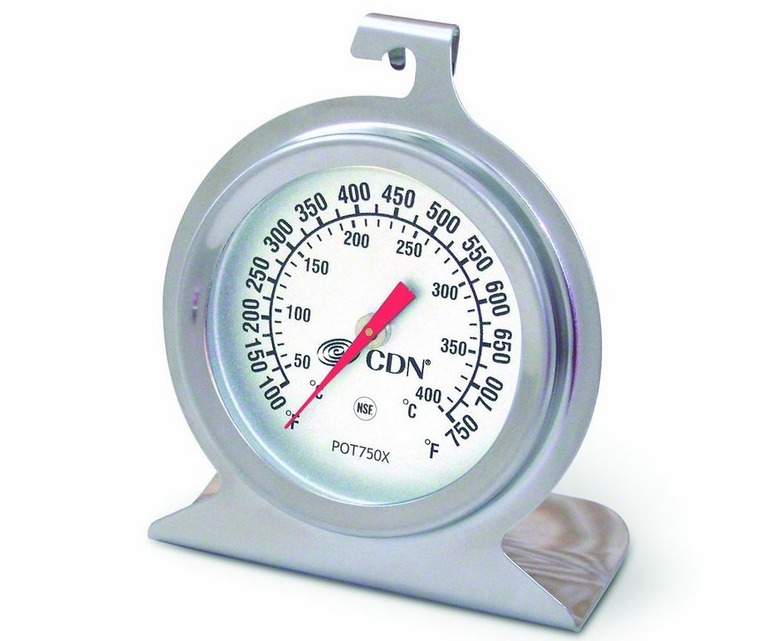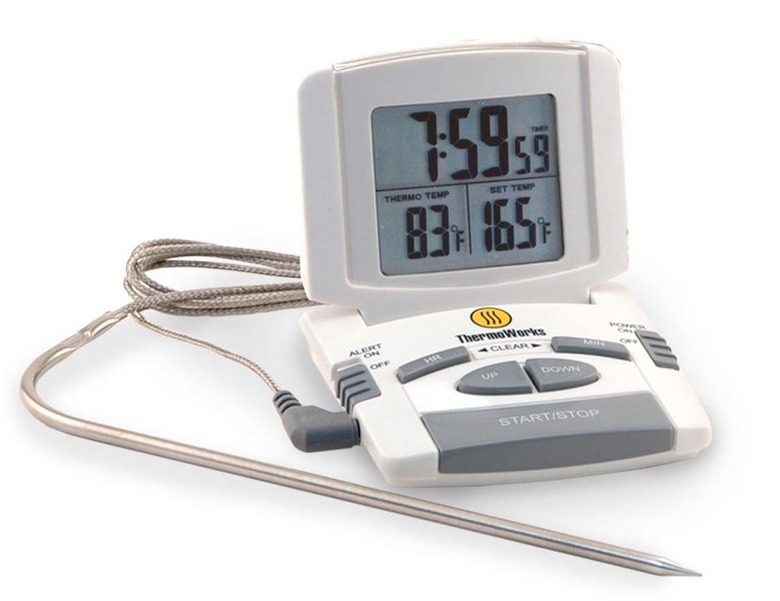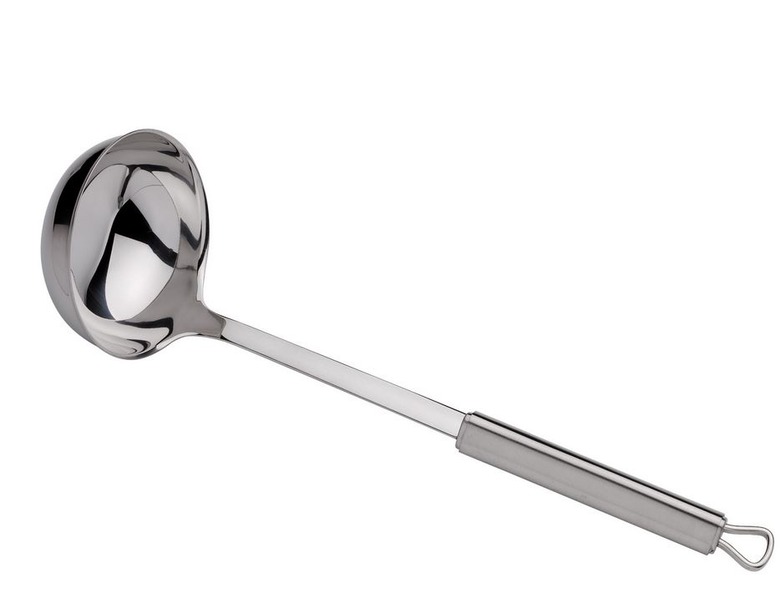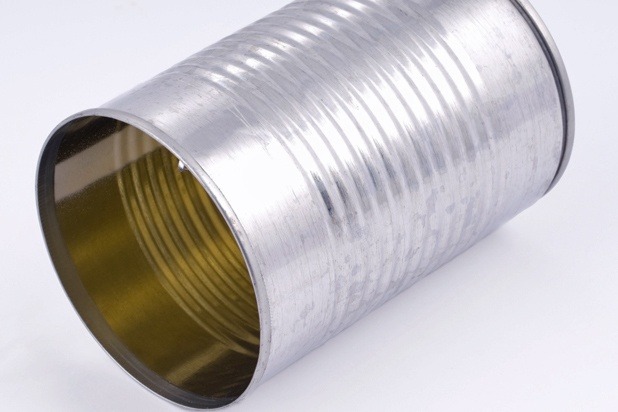Essential Tools For Your First Kitchen
Without a proper chef's knife, it's hard to get any cooking done at all. And it's worthwhile to invest some good money in this piece of equipment, since the chef's knife is going to be used much more often than any other knife in your kitchen.
Click here to see How to Become a Pro with Your Chef's Knife.
2. Paring Knife
A sharp paring knife is helpful for any knife task requiring fine movements, such as tracing your way around a peach or avocado, or perhaps dicing a shallot. A chef's knife works just fine in these situations, but for the inexperienced, can be a bit unwieldy, which is why we suggest also investing in a good paring knife.
3. Serrated Bread Slicer
Say goodbye to smushed bread. Properly used, a serrated bread knife can make the seemingly simple task of bread slicing, well, simple, because it can be harder than it sounds. To keep from ruining that beautiful crusty loaf, use long, quick strokes along the whole length of the knife without pressing down too hard on the bread.
Because the knife has teeth, it's also handy for slicing tomatoes.
4. Kitchen Shears
Besides coming in handy when you have to snip off the corner of that bag of microwavable Brussels sprouts, kitchen shears are also handy for giving frisée a haircut, cutting through fish bones, and breaking up chicken carcasses. Be sure to purchase a pair with detachable blades for easy cleaning.
5. Sharpening Steel
A sharpening steel can help keep the edges of your knives aligned and ready for use. If you're serious about keeping your knives in top shape, consider investing in a sharpening stone as well.
6. Magnetic Strip or Knife Block
After spending a bundle of money on some good knives, the last thing you want to do is to have them rattling around in a drawer somewhere, damaging their edges. Keep them on a wall-mounted magnetic strip or in a wooden knife block instead.
7. Can Opener
Sure, it's a "unitasker," but the sheer importance of this tool goes without saying.
8. Bottle Opener
See slide 7.
9. Cutting Board
It's a good idea to actually get at least two cutting boards — one for meat and one for everything else. This will help eliminate risks of cross-contamination. Even better, get a third one just for poultry.
A wooden cutting board will help cut down on wear and tear on your knives, and they're great for just about any task — except for working with meat. That's because they're porous and absorbent and can harbor bacteria. Instead, for meat, opt for something made from polypropylene and color-coded, so you won't mix up the chicken board with the fish board.
Cutting boards with rubberized feet are also helpful since they won't slide around on the work counter as you slice. The same task can be accomplished by placing a kitchen towel underneath a cutting board, but then you'd be out a kitchen towel.
10. Vegetable Peeler
If you eat any vegetables at all, you're going to want one of these. But which one should you buy?
In our research, we found that there are actually three main types for sale at most stores:
A side peeler is just that — meant to be used with your hand perpendicular to the direction of motion.
A Swiss peeler (also called a Y-peeler in some cases due to its shape) is intended to be used parallel to the direction of motion.
Which one you end up purchasing is really just a matter of preference. And lastly...
A julienne peeler isn't really meant for peeling vegetables per se — it's actually meant to be used on vegetables that are already peeled. It's used to create thin, long, even strips of vegetables (julienne) that are aesthetically pleasing and laborious by knife. Not totally necessary for a first-time kitchen, but we thought we'd also tell you what not to buy in this case.
Any of these peelers can be had in ceramic form; they're a bit pricey but nice because they won't rust like steel ones, and don't react chemically with foods.
11. Pepper Grinder
Grinding pepper from whole peppercorns ensures maximum flavor and aroma, which is probably why "freshly ground black pepper" has become a mantra in the ingredient list of pretty much any recipe calling for pepper these days. So purchasing a pepper grinder is a great investment.
12. Large Stockpot
If you plan on cooking pasta, making soups or stews, or even braising meat, a large stockpot will come in handy. Make sure that it comes with a lid, is ovensafe, and has sturdy handles.
13. Small Saucepan
Sometimes, you just don't need to cook that much food at once. These are handy for making everything from your morning oatmeal to sides of rice, quinoa, or couscous, and of course, sauces. As always, make sure this comes with a lid.
14. Large Sauté Pan
An ovensafe 12- to 14-inch sauté pan is a must for any kitchen. Whether you're searing off a nice juicy steak and creating a pan sauce, stir-frying, tossing pasta in sauce, or simply steaming some vegetables, a nice large sauté pan is the second-most important piece of real estate in your kitchen — the first being, of course, that big, beautiful countertop.
Choose one with deep, straight sides so that you can also use it for shallow frying, and make sure it comes with a lid, of course. Also, make sure it has a large, sturdy handle that won't snap off under heavy loads — the last thing you want is for the contents of the pan to spill all over the oven or kitchen floor when you're mobile with it (this has actually happened to the writer of this article). A small second handle on the other side is a nice touch.
15. Small Fry Pan
Sometimes, you just need something smaller. Whatever type of pan you're using, it should fit the size of the task — meaning, for example, that if you're planning on making a frittata for one, the pan should be sized for a frittata for one. Look for an ovensafe, 8- to 9-inch fry pan with a sturdy handle.
16. Grill Pan
At some point, you're going to want to grill something indoors. Maybe the weather's not cooperating, or you just don't feel like setting up and then cleaning an entire grill. It's not quite the same, but sometimes, a grill pan is just what you need. We like the rectangular ones that span two burners, rather than the round ones, and the best ones are reversible, with a griddle on the other side.
17. Baking Dish
Lasagna, casserole, cobbler — at some point, you'll need a baking dish. The "standard size" called for in most recipes is 9-by-13-inches.
Glass or ceramic? There is actually a difference. Both types can be used for cooking all kinds of food, but each one is better at certain tasks than the other: Ceramic is best for roasting meats and baking lasagnas, while glass is best for desserts such as brownies and cakes. Ceramic, unlike glass, can go straight from the oven to the refrigerator (or undergo similar swings in temperature) without breaking, while glass is easy to clean. The choice depends on what type of cooking you do most often.
18. Wooden Spoon
What comes to mind when people think of their grandma cooking in the kitchen? Probably a little old lady standing over the stove with — you guessed it — a wooden spoon. A wooden spoon is essential for stirring sauces and when sautéing, to ensure even cooking and distribution of flavors. And tasting, of course. Plus, if you're using nonstick cookware, you definitely don't want to scratch up that nonstick surface with anything made out of metal.
19. Spatula
Choose heat-resistant silicone spatulas for the greatest versatility. That way, you won't be confined to just folding batter with them. You'll be able to safely use them to make omelettes and scrambled eggs too, without having them melt.
20. Whisk
At some point in the very near future, you're going to need a whisk. It's an indispensable kitchen tool, useful for everything from basic tasks like making vinaigrettes to more advanced techniques like making roux. For some people, a whisk is a whisk, but if you're really interested, you'll notice three main types at the store:
Balloon whisks are big and, well, balloon-shaped, which means they're great for incorporating air into egg whites or anything else that needs to be fluffed up. Balloon equals air.
Sauce whisks are more slender and are useful for really mixing things up properly in a pot or pan because they can really get into the sides. Use these for cooking custards and sauces.
Flat whisks are especially designed to deliver the most leverage to the bottom of the pan, great for making roux or pan sauces.
21. Colander
"Remove from the heat and drain." That's a line you see a lot in recipes, but unless you have a colander, you're out of luck. Choose a stainless steel one over plastic so you can use it safely in high-heat applications, such as when draining pasta.
22. Measuring Cups and Spoons
They're not just for baking. If it's your first time making a recipe, chances are you'll want to stick to the directions, and you'll need to be able to measure out ingredients precisely as they're written. Choose stainless steel ones for superior durability.
23. Food Processor
Picking a food processor is a lot like picking a watermelon — choose one that is heavy for its size and free from blemishes. But in all seriousness, you'll want one with a powerful, durable motor and a sharp blade. Variable speeds are also a bonus. All the other bells and whistles, such as slicing disks, are nice, but not really necessary. Consider purchasing a smaller one for well, smaller jobs, because if you can't fill a large one up to the blade, nothing is going to get processed.
24. Box Grater
A box grater makes short work of tedious tasks like making "1/2 cup grated Parmesan cheese" from an actual block of Parmesan, with their sturdy setup and a hollow center that keeps whatever you're grating from going all over the place.
25. Slotted Spoon
If you're planning on frying food, a slotted spoon comes in handy for taking the food out of the oil without the oil. It also comes in handy when sautéing pieces of meat — say if you want to take the seared short ribs out of the pot without all of the rendered fat. Since, at some point, you'll want to use it for high-temperature applications like the examples just mentioned, make sure to choose a stainless steel spoon.
26. Stainless Steel Tongs
Choose long-handled stainless steel tongs for the greatest versatility; a pair of long-handled tongs will let you turn meat without getting too close to the heat, and work better for heavier food items like whole roasts. And as for self-locking tongs? We think they sound like a great idea, but we'd steer clear of them — they have the potential to be finicky, and are more trouble than they're worth.
27. Oven Mitt
No oven mitt? No problem. Just leave the oven door open and wait around until the baking dish, roasting pan, or casserole is cool enough to handle. But if you don't feel like waiting around and have other things to do, an oven mitt really saves you time.
28. Stainless Steel Mixing Bowls
You'll want a range of sizes — small, medium, and large. You should be able to fit the colander into one of these bowls, though, so try pairing them up before you buy. These will help you stay organized in the kitchen. Use one for everything you need to prep, another for prepped product, and another as a "garbage bowl."
29. Oven Thermometer
Oven temperatures can diverge wildly from the stated settings. If you're planning on doing any baking, braising, or roasting in your oven (or anything at all), spend a few bucks on an oven thermometer to find out what temperature your oven is really at when you set it to say, 350 degrees.
30. Meat Thermometer
A meat thermometer is a great tool to help you figure out if you've reached medium-rare, but it's also a must for food safety — say when you're cooking chicken, pork, or ground beef.
31. Ladle
Great, so you have this fantastic soup/stew/sauce that's simmering away on the stove and ready to go, filling the room (or perhaps the entire house) with heady aromas. But without a ladle, you won't have an easy and efficient way to get it from the pot to the bowl. So unless you enjoy using a tablespoon for such a task, don't leave the store without a ladle.
32. Steel Canister
Junk drawers suck. Minimize clutter by putting miscellaneous bric-a-brac like whisks, can openers, ladles, and slotted spoons in something like this, which can help you stay organized and on track while cooking. No more hunting around for the vegetable peeler when you need it; keep this by the stove or close to your cutting board.
